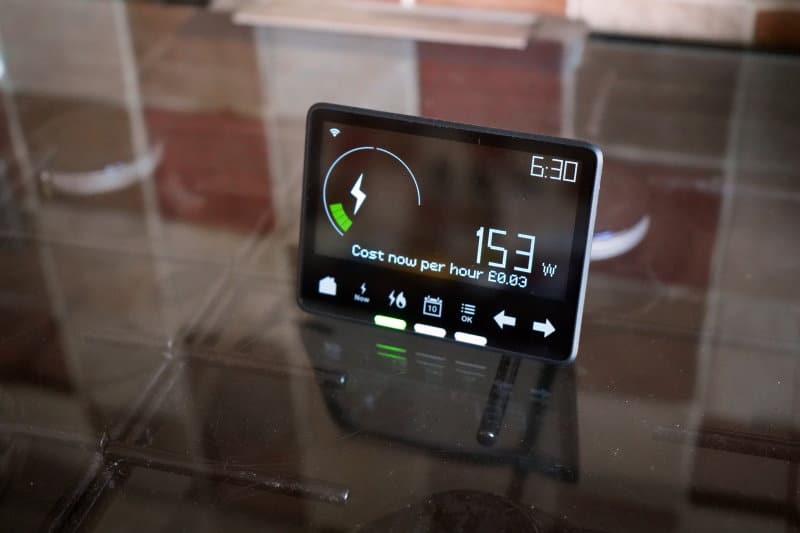Cable boxes are one of the many pieces of electronic equipment in your living room. Read on to know more about these devices.
A cable box emits radiation in elliptical forms when switched on. The emitted radiations often begin and terminate at the box, and the intensity of emission rapidly decreases with increasing distance. Maintain a distance of five feet from cable boxes when they’re on to attenuate their effect.
It will interest you to know that most electrical items emit radiation. What’s more? Some non-electrical items in your home also emit radiation. Continue reading to learn more about EMF radiation in household items.
What Is a Cable Box?
A cable box—also known as cable converter box—is an electronic device that converts digital television signal to analog. The device enables television sets that are not designed to be “cable ready” to receive cable channels. Although the television sets that are produced nowadays are “cable ready,” cable boxes still come in handy due to the advent of digital cable and the existence of pay-per-view (or premium television).
Radiations in Electrical Appliances
Electrical appliances are available in different forms, sizes, and shapes, most of which emit EMF radiations. Examples of such appliances include Wi-Fi routers, cable boxes, television sets, smart meters, home wiring, industrial machines, etc. When these devices are switched on—i.e., when electricity passes through them—they create an EMF around themselves.
Characteristics of EMF in Electrical Appliances
When electrical appliances emit radiation, they do so in peculiar ways which include:
- The emitted radiation terminates at its point of origin
- The emitted radiation decays at a rapid rate with an increase in distance
- EMFs are emitted in ever-widening circles, and they return to their source
Examples of Household Items That Emit Radiations

Apart from cable boxes, several other household items emit EMF radiations. Most people know that exposure to radiation can be dangerous; however, it may surprise you to learn that we are constantly being exposed to radiation in its different forms through several of the items we use daily. The following is a list of household items that emit radiations:
1. Cell phones and tablets
Cell phones and tablets emit radio frequency energy waves, which is a type of non-ionizing radiation. These devices are one of the major sources of EMF radiation due to the proximity they share with human bodies for large parts of the day.
Unfortunately, most people are unaware of the extent of harm caused when they expose themselves to the EMF radiation emitted by mobile devices. Furthermore, several kinds of research have been carried out that have linked cellphones to brain tumors.
2. Computers
Computers also generate extensive EMF radiation levels due to the length of time people spend exposed to them. If you are the type of person who rests the device on your lap while you work, know that you are bringing your body, especially your reproductive organs, in close contact with the emitted radiation.
3. Smart meters
These devices are increasingly being installed in the United States. Fortunately, smart meters are placed outside of the home, thereby ensuring that people are far from emitted radiation. Smart meters also emit radio frequency waves. The frequency and power of the radio frequency wave emitted by smart meters are similar to that of a cordless phone, Wi-Fi router, etc.
4. Wireless devices
Like mobile devices and smart meters, wireless devices such as Wi-Fi routers and Bluetooth transmitters also produce radio frequency waves. Specific wireless devices such as long-distance transmitters emit high levels of RF waves. Because of the increase in smart devices in homes today, Wi-Fi routers are also on the rise. Moreso, they operate non-stop 24/7. Some sources believe that some of the most harmful radiation effects from Wi-Fi devices are reproductive issues, cancer, etc.
5. Granite countertops
Several kinds of rock, including granite, contain uranium. According to the Environmental Protection Agency (EPA), nearly all minerals, rocks, and soils contain small amounts of naturally occurring radioactive elements.
6. Microwave ovens
According to the US Bureau of Labor Statistics, 90% of American households owned a microwave oven in 1997. This figure had increased to 95% by 2011.
Microwave ovens emit huge amounts of EMF radiation, which is strong enough to cook food and human tissue. According to the EPA, microwave ovens employ electromagnetic waves that penetrate food, causing water molecules to vibrate and produce heat within the food to cook it rapidly. While microwaves do not make food radioactive, the radiation they produce circulates in the oven. This renders it imperative that the microwave oven doors seal properly to ensure that the radiation stays in the oven.
Consequently, you need to avoid slamming the door, wear and tear, and the build-up of dirt to ensure that the microwave door seals properly without leakage. Furthermore, it is advised that you stand a few feet away from the microwave while it operates.
7. Smoke detectors
Some household smoke detectors use trace amounts of americium-241, a radioactive isotope, to alert their users when they detect smoke in the air. Despite this, the detector does not pose any health risk as it is surrounded by ceramic and foil. This makes it imperative that you do not tamper with the detector to avoid damaging the foil or ceramic.
8. Television
The older, box-shaped television set with a cathode-ray tube emits large amounts of EMF radiation. Newer flat-screen TVs also emit radiation at a lesser rate than the older versions. Televisions of today produce a significant amount of EMF radiation since they are now able to connect to the Internet through Wi-Fi and other near-field communication technologies; i.e., they are now smart.
Smart TVs are increasingly gaining popularity in the world so much that more than half of the TVs shipped across the world in the first quarter of 2016 were smart TVs.
9. Electrical wiring
Most people do not realize it, but the electrical wiring in homes also emits radiation. If the wiring is poorly designed, it will generate higher levels of radiation than normal designs would. You can measure the level of radiation in different sections of your home through an EMF meter. You should alert your electrician and inform them to be on the lookout for high EMF levels when next they visit.
10. Dimmer switches
This might surprise you, but dimmer switches emit more radiation than regular light switches. When you dim light using a dimmer switch, the electric current that is not used is emitted as EMF radiation. This means that you expose yourself to unnecessary amounts of EMF radiation when you use your dimmer switches.
How to Protect Against Radiation in Electrical Appliances

You can protect yourself from exposure to high levels of radiation by doing the following:
-
Reduce the length of exposure
Exposure to radiation does not have an immediate effect on you. It often takes time, and a considerable amount of exposure before it starts to affect your body’s changes. In essence, the longer you are exposed to EMF, the greater its effect. Take advantage of this fact by turning on your EMF-emitting devices only when you need to use them. Also, take as many breaks from them as you can when you can.
-
Increase your distance to sources
The more distance between you and a radiation source, the less intense it has. Ensure you keep some distance between you and the source of radiation, regardless of how small it is.
-
Reduce the amount of radiation-emitting sources
The more radiation-emitting devices you have and use, the more you expose yourself to radiation. Several objects and devices can connect to the Internet through wireless frequencies, which results in the emission of radiation. If you can get rid of these sources, you can get rid of their radiation. Although this method is the most effective option, it is highly difficult to disconnect from the Internet completely.
-
Use a radiation shield
A radiation shield is any object that can conduct, absorb, and dissipate the radiation emitted by a source. Radiation shields can function as a guard against EMF radiation if they are placed between you and the source of radiation. The amount or type of shielding required depends on the amount of radiation emitted by the source. Examples of radiation shields are lead, tin, plastic, etc.
-
Use wired devices
Technology has developed so much that several devices can now operate without a plug-in. For instance, phones, keyboards, headphones, speakers, etc., can be used without wires. Although this increases the convenience of using these devices, it also increases exposure to EMF radiation. This is because wireless devices connect through radio frequencies, transmitting EMF radiation through the air instead of wires in wired devices.
Conclusion
Almost all household items—like cable boxes, televisions, etc.—also emit radiations, even if they do so in a small amount. You need to be aware of the amount of radiation each of these items emits to know the length of time you’d spend close to them. This involves using an EMF meter to measure the amount of radiation in each item. Finally, although cable boxes and other household items emit radiation, you can take active steps to protect yourself.


